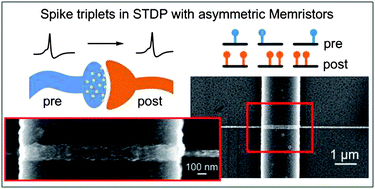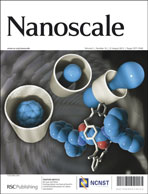Synaptic behavior and STDP of asymmetric nanoscale memristors in biohybrid systems
Abstract
We fabricate and characterize asymmetric memristors which show a very strong single-sided hysteresis. When biased in one direction there is hysteresis and in the opposite direction there is a lack of hysteresis. We demonstrate that this apparent lack is actually hysteresis on a much faster time-scale. We further demonstrate that this form of asymmetric behavior correlates very well to the asymmetric structure and function of an actual synapse. The asymmetric memristor device presented here is necessary to correctly implement spike-timing-dependent-plasticity STDP in mixed memristor/neuron hybrid systems as an artificial synapse. These devices show the required characteristics for implementing the asymmetric form of long-term potentiation (LTP) and long-term depression (LTD) of a synapse between two neurons, where symmetric memristor devices do not. Signals from a presynaptic neuron are sent via its axon across the synapse to the dendrite of a postsynaptic neuron. Postsynaptic neuron signals sent to subsequent neurons have an influence on the strength of any further presynaptic neuron signals received by the postsynaptic neuron across the synapse. These signals are grouped into spike triplets within the framework of STDP and, as we experimentally show here, can be implemented with asymmetric memristors, not standard symmetric memristors.


 Please wait while we load your content...
Please wait while we load your content...